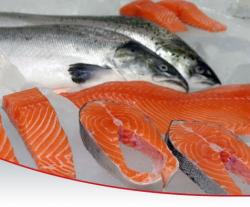Salmon Breeds Have Particular Lures
September 20, 2010 | 2 min to read

Americans used to have few warm feelings for fish, eating on average about 20-30 nanograms of it per year. But then we had the '80s, and along with the leg warmers and the curiously colored denim came our love of salmon. It was a bizarre turnaround, with salmon sold as the unfishlike fish when its flavor is so strong and distinct. But there my mom was, big hair and all, at the suddenly popular FoodTown fish counter, picking up salmon steaks. David McRae, a sockeye salmon fisherman in Bristol Bay, Alaska, told me that in those days, the price of salmon was so high that tender boats would roam the bay, buying fishermen's catches with cash kept in stacks of hundreds. "It was like the Wild West," he said, "with as much cash as fish on those boats." The Cocaine '80s were the Salmon '80s.
But then the explosion of farmed salmon made the fish really cheap and truly ubiquitous. We could be here all weekend talking about the environmental and economic impacts of farmed (aka "Atlantic") salmon (and the recently approved farmed salmon genetically modified to grow at twice its normal rate), but today, let's just focus on flavor. To my mind, the vast majority of farmed salmon tastes lifeless, fatty pabulum with a fishy muddiness. And it's heartbreaking that this is the flavor most people know as "salmon," when wild-caught Pacific salmon can be so stunningly delicious and varied in its flavor.
But wild Pacific salmon can also be confusing, since there are very different types, seasons and ideal cooking methods. So I called in a ringer, the extraordinary chef Greg Higgins of Higgins Restaurant and Bar in Portland, Ore., and he offered pointed advice on selecting and cooking salmon.
To read the rest of the story, please go to: Salon.
